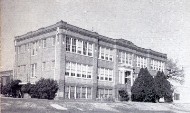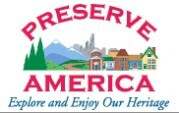Milam County Historical Commission
Milam County, Texas
All credit for these articles go to
Susie Sansom-Piper and
the Rockdale Reporter
Milam County, Texas
All credit for these articles go to
Susie Sansom-Piper and
the Rockdale Reporter






ON THE OTHER SIDE OF THE TRACKS, PART II
Life on the farm was one of survival
by Susie Sansom-Piper
Rockdale Reporter - February 12, 2009
After slavery ended, many blacks still depended on farm life to survive.
There were a number of prominent farmers in the Liberty Hill area, including Rabbs,
Scotts, Craytons, Claytons, Dykes, Rhems, Mobleys, Gipsons, Kelloughs and more.
This was located between Thorndale and Rockdale, near Brushy Creek and the San Gabriel
River.
Many town people worked on these farms. They were subsistence farmers, equipped to
support life in general.
Farm life
They grew a variety of crops, raised dairy cows, horses, sheep, goats, hogs and some were
beekeepers. Their surplus goods were often brought to town to sell.
Most folks had gardens and during growing seasons gathered and canned their surplus
vegetables for the winter months.
Often times they also shared with their surrounding neighbors, fruits, dewberries, plums,
pears and peaches were gathered, canned fresh for pies or made into jellies and
preserves.
Wild mustang grapes provided a grape drink which was also fermented for wine.
Some farmers made their own corn whiskey and beer from grains, while others made sorghum
molasses from sugar cane.
Beehives were robbed by the skilled farmer and preserved for eating, cooking and
medication. Hominy was prepared by soaking corn kernels in ashes and preserving it in
jars.
Many owned milk cows which provided them with milk, butter and homemade cottage cheese,
made from clabber milk and stored in cheese cloth bags which allowed the water residue to
evaporate.
Hog killing time
Dugouts were often dug to store potatoes and a smokehouse was erected to cure and store
meat. It was common to catch a chicken from the yard and prepare it for a Sunday meal.
Winter meant hog killing time. This required the help of neighbors and a person who was
skilled in the art of dressing the animal.
The meat was divided into bacon, ham, meat for grinding sausage and cured with salt or
other seasonings.
Sausage was stuffed into clean intestines and smoked, along with the ham and bacon.
The meat was stored in the smokehouse or preserved in a special meat box. Meat lasted
through the winter and into the spring.
No part of the hog was discarded. Liver, lights, heart chitterlings and more were eaten
first. Everyone who lived in the neighborhood was given a “mess” of meat.
Shine house
Milk products were purchased from the late Jerry Warren or from “Miz Shine” for 10 cents
per gallon.
The Shine home, today’s Rockdale Christian Services Food Pantry on West Cameron (US 79)
still stands.
No one really starved and, although food may have been somewhat scarce from the 20s
through the 40s, there was a bond of sharing. With wise ingenuity and planning, everyone
managed to survive.
Labor in town was confined to maid, janitorial, shoe shining, delivery man and laundry.
Folks took in washing and ironing.
Some farmers sold vegetables and fruit, such as greens, sweet potatoes, Irish potatoes,
peaches, pears, plums and dewberries.
Meat wagon
There were others who operated a meat wagon before meat was sold in the local grocery
stores.
Meat was laid out in the wagon bed and covered with ducking. Neighborhood rounds were
made to each house.
Strangely, the meat did not spoil nor were flies in abundance around it.
D. S. Shanks, third principal of Aycock High School, sold fish on the weekends.
The man of the family also hunted wild game, such as rabbits, squirrels, raccoons,
opossums, quail and dove for additional food supplements.
Government agencies also provided pressure cooker canning of peas and corn in the local
school. This was under the direction of the county agent and the late Marcella Wilhite.
Seasonal farm work, such as chopping and picking cotton, baling hay, pulling corn and
cutting maize heads was a means of survival.
Early spring and fall months, work was available in the surrounding areas.
The horns of the R. L. Batte truck from the Sharp-Tracy area, and the Camp truck from San
Gabriel, could be heard at 5 a.m. summoning the workers.
Follow the work
Late summer and early winter, many traveled to South Texas to gather the cotton crops and
watermelons.
Later in the winter months, many traveled to West Texas to gather crops.
Hands were paid 50 cents to $1.50 for picking 100 pounds of cotton. Some were able to
pick up to 300 pounds daily.
Businessman Artis Lovelady of Rockdale contracted with farmers from South and West Texas
and transported workers to these locations.
The West Texas venture meant accumulating enough money to survive the winter months.
Often times that meant children were not able to enter school until around the Christmas
holidays.
It is now the RCS Food Pantry but this old home on Cameron Avenue
was once the Shine farm house, according to author Susie Piper
who recently visited the location.
.
Photo by Mike Brown
